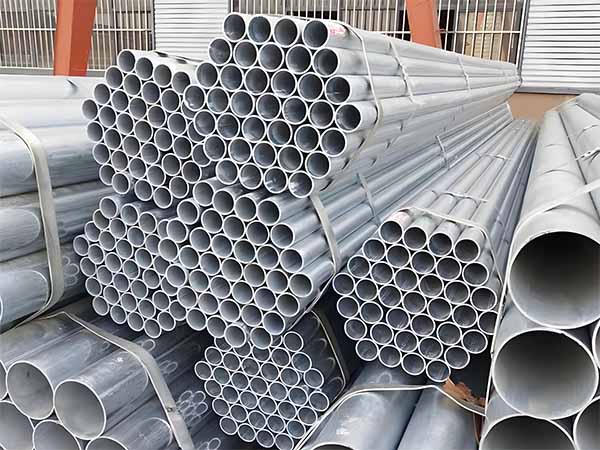
Schedule 40 steel pipe Wall Thickness Table:
|
ANSI Schedule 40 Steel Pipes - Dimensions |
||||||||||||
|
Pipe Size |
Diameter |
Nominal Thickness |
Transverse Areas |
Length of Pipe |
Volume |
Weight |
Number of Threads per inch of Screw |
|||||
|
|
External |
Internal |
|
External |
Internal |
Steel |
External Surface |
Internal Surface |
|
(lb/ft) |
(kg/m) |
|
|
1/8 |
0.405 |
0.27 |
0.07 |
0.13 |
0.06 |
0.07 |
9.43 |
14.20 |
0.0004 |
0.24 |
0.36 |
27 |
|
¼ |
0.540 |
0.36 |
0.09 |
0.23 |
0.10 |
0.13 |
7.07 |
10.49 |
0.0007 |
0.42 |
0.63 |
18 |
|
3/8 |
0.675 |
0.49 |
0.09 |
0.36 |
0.19 |
0.17 |
5.66 |
7.75 |
0.0013 |
0.57 |
0.84 |
18 |
|
½ |
0.840 |
0.62 |
0.11 |
0.55 |
0.30 |
0.25 |
4.55 |
6.14 |
0.0021 |
0.85 |
1.26 |
14 |
|
¾ |
1.050 |
0.82 |
0.11 |
0.87 |
0.53 |
0.33 |
3.64 |
4.64 |
0.0037 |
1.13 |
1.68 |
14 |
|
1 |
1.315 |
1.05 |
0.13 |
1.36 |
0.86 |
0.49 |
2.90 |
3.64 |
0.0060 |
1.68 |
2.50 |
11 ½ |
|
1 ¼ |
1.660 |
1.38 |
0.14 |
2.16 |
1.50 |
0.67 |
2.30 |
2.77 |
0.0104 |
2.27 |
3.38 |
11 ½ |
|
1 ½ |
1.900 |
1.61 |
0.15 |
2.84 |
2.04 |
0.80 |
2.01 |
2.37 |
0.0141 |
2.72 |
4.04 |
11 ½ |
|
2 |
2.375 |
2.07 |
0.15 |
4.43 |
3.36 |
1.08 |
1.61 |
1.85 |
0.0233 |
3.65 |
5.43 |
11 ½ |
|
2 ½ |
2.875 |
2.47 |
0.20 |
6.49 |
4.79 |
1.70 |
1.33 |
1.55 |
0.0333 |
5.79 |
8.62 |
8 |
|
3 |
3.500 |
3.07 |
0.22 |
9.62 |
7.39 |
2.23 |
1.09 |
1.25 |
0.0513 |
7.58 |
11.27 |
8 |
|
3 ½ |
4.000 |
3.55 |
0.23 |
12.56 |
9.89 |
2.68 |
0.95 |
1.08 |
0.0687 |
9.11 |
13.56 |
8 |
|
4 |
4.500 |
4.03 |
0.24 |
15.90 |
12.73 |
3.17 |
0.85 |
0.95 |
0.0884 |
10.79 |
16.06 |
8 |
|
5 |
5.563 |
5.05 |
0.26 |
24.30 |
20.00 |
4.30 |
0.69 |
0.76 |
0.1389 |
14.61 |
21.74 |
8 |
|
6 |
6.625 |
6.07 |
0.28 |
34.47 |
28.89 |
5.58 |
0.58 |
0.63 |
0.2006 |
18.97 |
28.23 |
8 |
|
8 |
8.625 |
7.98 |
0.32 |
58.42 |
50.02 |
8.40 |
0.44 |
0.48 |
0.3552 |
28.55 |
42.49 |
8 |
|
10 |
10.750 |
10.02 |
0.37 |
90.76 |
78.85 |
11.90 |
0.36 |
0.38 |
0.5476 |
40.48 |
60.24 |
8 |
|
12 |
12.750 |
11.94 |
0.41 |
127.64 |
111.90 |
15.74 |
0.30 |
0.32 |
0.7763 |
53.60 |
79.77 |
8 |
|
14 |
14.000 |
13.13 |
0.44 |
153.94 |
135.30 |
18.64 |
0.27 |
0.28 |
0.9354 |
63.00 |
93.75 |
8 |
|
16 |
16.000 |
15.00 |
0.50 |
201.05 |
176.70 |
24.35 |
0.24 |
0.25 |
1.2230 |
78.00 |
116.08 |
8 |
|
18 |
18.000 |
16.88 |
0.56 |
254.85 |
224.00 |
30.85 |
0.21 |
0.23 |
1.5550 |
105.00 |
156.26 |
8 |
|
20 |
20.000 |
18.81 |
0.59 |
314.15 |
278.00 |
36.15 |
0.19 |
0.20 |
1.9260 |
123.00 |
183.05 |
8 |
|
24 |
24.000 |
22.63 |
0.69 |
452.40 |
402.10 |
50.30 |
0.16 |
0.17 |
2.7930 |
171.00 |
254.48 |
8 |
Read more:ASTM A106 schedule 40 dimensions